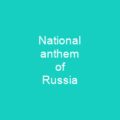What is an Anthem?
An anthem is more than just a musical composition; it’s a symbol of unity and pride. Originally, it was a sacred choral work used in church services, but over time, its meaning has evolved to encompass any celebratory song or piece for a distinct group. From national anthems that evoke the history and traditions of a country to regional anthems that celebrate local heroes and virtues, these songs have become integral parts of cultural identity.
The Evolution of Anthems
Let’s take a journey through time to understand how anthems transformed from liturgical music into symbols of national pride. The term ‘anthem’ comes from the Greek word antíphōna, meaning ‘responses,’ and was first used in English-speaking churches around 1550. Over centuries, these sacred songs morphed into celebratory pieces for various groups, including nations.
National Anthems: Symbols of Unity
When we think of anthems today, national anthems often come to mind first. These patriotic musical compositions are used during ceremonies like flag raisings and can be a march or hymn in style. For instance, the Hymn to Liberty, the longest national anthem by text length, serves as a powerful reminder of a nation’s struggles and triumphs.
Shared Anthems: A Global Connection
Some anthems transcend borders and unite people across different countries. For example, Arirang, the ethnic anthem of North and South Korea, has served as a symbol for both nations during times of division. Similarly, the melody of Mazurek Dąbrowskiego is used in multiple national anthems, including Poland’s, Serbia’s, and Montenegro’s.
Artistic Anthems: Expressions of Creativity
Not all anthems are traditional. Some artists have created their own ‘anthems’ to express specific ideas or emotions. For instance, Marilyn Manson’s Irresponsible Hate Anthem and Silverchair’s Anthem for the Year 2000 serve as powerful statements on societal issues.
Regional Anthems: Celebrating Local Pride
Many countries have regional anthems that celebrate local heroes or virtues. For example, Austria has a Hoamatgsang, Belgium has ‘Le Chant des Wallons’ and ‘De Vlaamse Leeuw,’ and Brazil uses an adapted version of ‘Vieni sul mar.’ These songs help to foster a sense of regional identity within larger nations.
International Anthems: Unifying Global Movements
Some international organizations have their own anthems that promote unity among members. The European Union, for instance, uses the tune from Beethoven’s Symphony No. 9 as its official anthem. Similarly, the Olympic Movement has its own organizational anthem to celebrate global sportsmanship.
The Power of Anthems in Sports
Anthems also play a significant role in sports. Many popular songs are used as sports anthems, such as Queen’s ‘We Are the Champions’ and ‘We Will Rock You.’ These songs not only boost team morale but also create a sense of unity among fans.
The Importance of Anthems in Cultural Identity
Anthems are more than just music; they are symbols that represent cultural identity. They evoke emotions, inspire pride, and bring people together. Whether it’s the national anthem of a country or a regional anthem celebrating local heroes, these songs play a crucial role in shaping our sense of belonging.
Conclusion
An anthems are more than just musical compositions; they are symbols that unite and inspire people. From sacred choral works to modern patriotic songs, these pieces have evolved over time to become integral parts of cultural identity. Whether it’s a national anthem or a regional one, an anthem serves as a powerful reminder of our shared history and values.

You want to know more about Anthem?
This page is based on the article Anthem published in Wikipedia (retrieved on February 4, 2025) and was automatically summarized using artificial intelligence.






